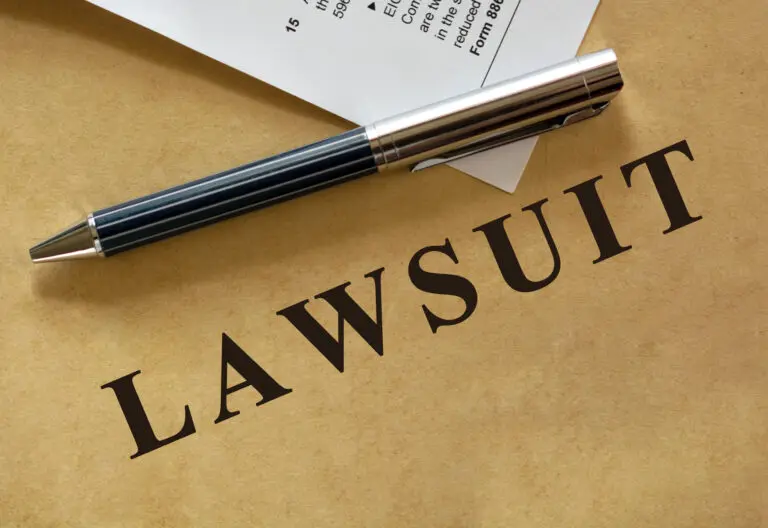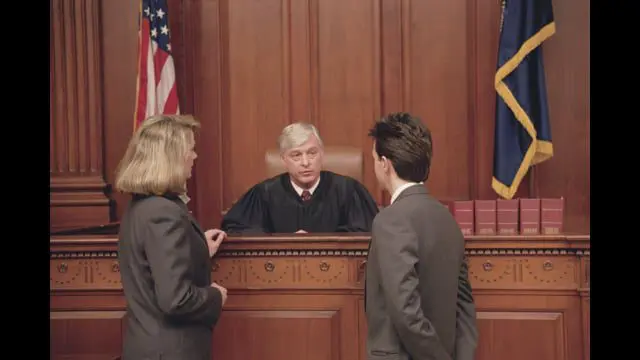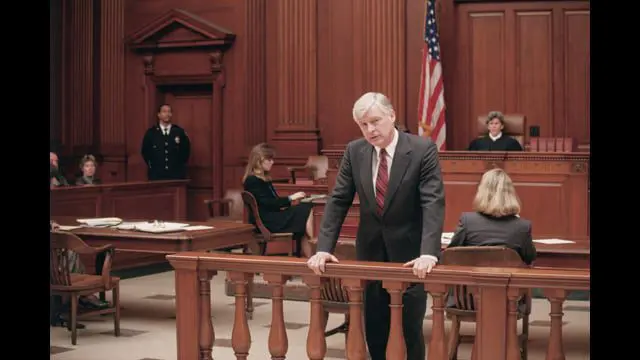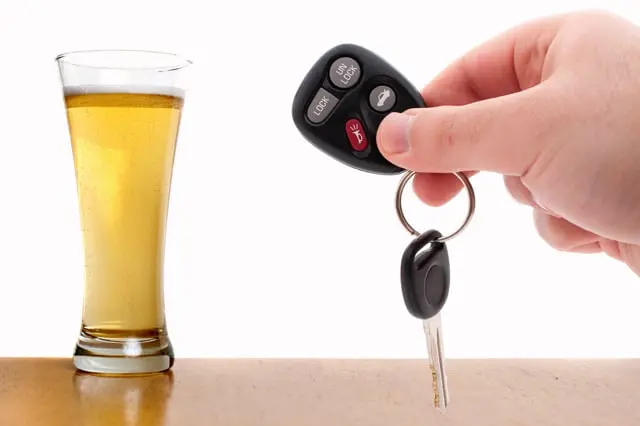Losing a loved one is always a difficult experience, but when that loss occurs due to someone else’s negligence or intentional actions, the emotional and financial impact can be even more profound. In such cases, the surviving family members may have the right to file a wrongful death lawsuit. Understanding the steps involved in this legal process is crucial to navigating it effectively and ensuring that justice is served. This article provides a detailed overview of the typical steps involved in a wrongful death lawsuit when working with a wrongful death lawyer.
Understanding Wrongful Death Lawsuits
A wrongful death lawsuit is a civil action brought by the family members or estate of a deceased person against the party responsible for the death. These lawsuits seek compensation for the financial and emotional losses suffered by the survivors. While each case is unique, the legal process typically follows a set of common steps, which are outlined below.
The Legal Basis for Wrongful Death Claims
A file a wrongful death lawsuit, there must be a legal basis for the claim. This means that the death must have been caused by another party’s negligence, recklessness, or intentional misconduct. Common situations that give rise to wrongful death claims include:
- Medical malpractice: When a healthcare professional’s negligence results in a patient’s death.
- Car accidents: When a driver’s negligence or recklessness causes a fatal collision.
- Workplace accidents: When unsafe working conditions or employer negligence leads to a fatal injury.
- Product liability: When a defective product causes a fatal injury.
- Criminal acts: When a person is intentionally killed by another individual.
In each of these scenarios, the wrongful death lawyer will need to gather evidence to prove that the defendant’s actions directly caused the death and that the survivors are entitled to compensation.
Who Can File a Wrongful Death Lawsuit?
En individuals who are eligible to file a wrongful death lawsuit vary depending on state laws. Generally, the following parties may have the right to file:
- Immediate family members: This includes spouses, children, and parents of the deceased.
- Life partners and financial dependents: In some states, life partners or anyone who was financially dependent on the deceased may be eligible to file.
- Distant family members: Some states allow distant relatives, such as siblings or grandparents, to file a wrongful death claim.
- Personal representatives: The executor or administrator of the deceased’s estate may file the lawsuit on behalf of the estate.
Understanding who can file the lawsuit is a critical first step in the legal process. A wrongful death lawyer can provide guidance on eligibility and help determine the appropriate party to file the claim.
Initial Consultation and Case Evaluation
The first step in pursuing a wrongful death lawsuit is to schedule an initial consultation with a wrongful death lawyer. During this meeting, the lawyer will evaluate the case, discuss the circumstances surrounding the death, and determine whether there is a valid legal claim.
Gathering Information and Evidence
During the initial consultation, the lawyer will ask for detailed information about the events leading up to the death. This may include:
- Medical records: If the death was related to medical treatment, the lawyer will need to review the deceased’s medical history and treatment records.
- Accident reports: In cases involving car accidents or workplace incidents, the lawyer will review police reports, accident investigations, and any other relevant documentation.
- Witness statements: The lawyer may interview witnesses who can provide insight into the circumstances surrounding the death.
- Financial records: To determine the appropriate amount of compensation, the lawyer will review the deceased’s financial records, including income, benefits, and any financial contributions to the family.
This information is critical for building a strong case and establishing the defendant’s liability. The lawyer will also use this information to estimate the potential value of the claim, taking into account factors such as medical expenses, funeral costs, lost income, and non-economic damages like pain and suffering.
Legal Strategy and Case Planning
Once the lawyer has gathered the necessary information, they will develop a legal strategy for pursuing the wrongful death claim. This strategy will include determining the appropriate legal theories to pursue, identifying potential defendants, and outlining the steps needed to prove the case in court.
In some cases, the lawyer may recommend pursuing a settlement with the defendant or their insurance company to avoid the time and expense of a trial. In other cases, the lawyer may advise proceeding directly to litigation, especially if the defendant is unwilling to negotiate a fair settlement.
Filing the Wrongful Death Lawsuit
After the initial consultation and case evaluation, the next step is to formally file the wrongful death lawsuit in court. This process involves several key steps, each of which is critical to the success of the case.
Drafting and Filing the Complaint
The first step in filing a wrongful death lawsuit is to draft a legal document known as a “complaint.” The complaint outlines the plaintiff’s allegations against the defendant, the legal basis for the claim, and the damages being sought. The complaint must be carefully drafted to ensure that all relevant legal theories are included and that the plaintiff’s case is clearly presented.
Once the complaint is drafted, it is filed with the appropriate court. The court will then issue a summons, which is a legal document that notifies the defendant of the lawsuit and requires them to respond.
Serving the Defendant
After the complaint is filed, the defendant must be formally notified of the lawsuit. This process is known as “service of process.” The defendant is typically served with a copy of the complaint and the summons by a process server or a law enforcement officer. In some cases, the defendant may be served by certified mail or another method approved by the court.
Service of process is a critical step in the legal process, as it ensures that the defendant is aware of the lawsuit and has an opportunity to respond. If the defendant is not properly served, the case may be dismissed or delayed.
Defendant’s Response
Once the defendant has been served with the complaint, they have a limited amount of time to file a response with the court. The defendant’s response may take several forms, including:
- Answer: The defendant may file an “answer” to the complaint, in which they admit or deny the allegations and present any defenses they plan to use in the case.
- Motion to dismiss: The defendant may file a motion to dismiss the case, arguing that the lawsuit is legally invalid or that the court does not have jurisdiction.
- Counterclaim: The defendant may file a counterclaim against the plaintiff, alleging that the plaintiff is actually responsible for the death or that the plaintiff has committed some other legal wrong.
The defendant’s response will determine the next steps in the legal process. If the defendant files a motion to dismiss, the court will need to rule on the motion before the case can proceed. If the defendant files an answer, the case will move forward to the discovery phase.
Fase de descubrimiento
The discovery phase is a critical part of the wrongful death lawsuit process, as it allows both parties to gather and exchange evidence that will be used in the case. The discovery phase typically involves several key components, each of which is essential for building a strong case.
Interrogatories and Requests for Production
One of the first steps in the discovery process is to exchange written questions known as “interrogatories.” These questions are designed to gather information about the other party’s case, including their version of events, the evidence they plan to use, and any legal arguments they intend to make.
In addition to interrogatories, both parties may also submit “requests for production” of documents. These requests require the other party to provide copies of relevant documents, such as medical records, financial statements, accident reports, and other evidence that will be used in the case.
The information gathered through interrogatories and requests for production is critical for building a strong case and preparación del juicio.
Deposiciones
Another key component of the discovery phase is the deposition process. A deposition is a formal, recorded interview conducted under oath, in which a witness or party to the lawsuit is asked questions about the case. Depositions are typically conducted by the attorneys for both sides and may involve witnesses, experts, and the parties themselves.
Depositions are an essential part of the discovery process, as they allow the attorneys to gather testimony and assess the credibility of witnesses. The information gathered during depositions can be used to support legal arguments, challenge the other party’s case, and prepare for trial.
Peritos
In many wrongful death cases, expert witnesses play a critical role in establishing the defendant’s liability and calculating the damages owed to the plaintiff. Expert witnesses may include medical professionals, accident reconstruction specialists, economists, and other experts who can provide testimony on key aspects of the case.
During the discovery phase, both parties may identify and depose expert witnesses who will testify at trial. The testimony of these experts can be crucial in proving the plaintiff’s case and securing a favorable outcome.
Peticiones previas al juicio y negociaciones de conciliación
As the discovery phase comes to a close, both parties will begin preparing for trial. This preparation often involves filing pre-trial motions and engaging in settlement negotiations.
Pre-Trial Motions
Before the trial begins, both parties may file pre-trial motions with the court. These motions may address a variety of issues, including:
- Motions to exclude evidence: Either party may file a motion to exclude certain evidence from the trial, arguing that it is irrelevant, prejudicial, or otherwise inadmissible.
- Motions for summary judgment: A party may file a motion for summary judgment, asking the court to rule in their favor without a trial. This motion argues that there are no genuine issues of material fact and that the moving party is entitled to judgment as a matter of law.
- Motions in limine: These motions seek to limit or prevent certain arguments or evidence from being presented at trial.
The court’s rulings on these motions can significantly impact the trial and the overall outcome of the case.
Settlement Negotiations
Throughout the wrongful death lawsuit process, both parties may engage in settlement negotiations in an attempt to resolve the case without going to trial. Settlement negotiations typically involve discussions between the attorneys for both sides, and may be facilitated by a mediator or other neutral third party.
A settlement can be an attractive option for both parties, as it allows them to avoid the time, expense, and uncertainty of a trial. However, reaching a settlement requires both parties to agree on the terms, including the amount of compensation to be paid.
If a settlement is reached, the case will be resolved without a trial, and the settlement agreement will be submitted to the court for approval. If no settlement is reached, the case will proceed to trial.
Ensayo
If the case is not resolved through settlement, it will proceed to trial. The trial is the final stage of the wrongful death lawsuit process, where both parties present their evidence and arguments to the judge or jury.
Opening Statements
The trial begins with opening statements from the attorneys for both sides. The opening statements provide an overview of the case, outline the key evidence that will be presented, and set the stage for the trial.
The plaintiff’s attorney will typically go first, followed by the defendant’s attorney. The opening statements are not evidence, but they provide a roadmap for the trial and help the judge or jury understand the issues at hand.
Presentation of Evidence
After the opening statements, both parties will present their evidence. The plaintiff’s attorney will present their case first, calling witnesses, introducing documents, and presenting other evidence to support their claims.
The defendant’s attorney will then have the opportunity to cross-examine the plaintiff’s witnesses and challenge the evidence presented. After the plaintiff’s case is complete, the defendant’s attorney will present their case, calling their own witnesses and presenting their own evidence.
Throughout the trial, both parties may introduce expert testimony, medical records, accident reports, and other evidence to support their arguments.
Closing Arguments and Jury Deliberation
Once both parties have presented their evidence, the trial will conclude with closing arguments. The closing arguments provide each attorney with an opportunity to summarize their case, highlight the key evidence, and persuade the judge or jury to rule in their favor.
After the closing arguments, the judge or jury will deliberate and reach a verdict. In a jury trial, the jury will decide whether the defendant is liable for the wrongful death and, if so, determine the amount of damages to be awarded to the plaintiff.
If the judge or jury rules in favor of the plaintiff, the court will issue a judgment awarding damages to the plaintiff. If the ruling is in favor of the defendant, the case will be dismissed.
Mociones y recursos posteriores al juicio
After the trial, either party may file post-trial motions or appeal the verdict.
Post-Trial Motions
Post-trial motions are requests made to the court after the trial has concluded. These motions may seek to:
- Set aside the verdict: A party may ask the court to set aside the verdict and order a new trial, arguing that there were errors in the trial or that the verdict was against the weight of the evidence.
- Modify the judgment: A party may request that the court modify the judgment, such as by reducing the amount of damages awarded.
The court will review these motions and issue a ruling based on the arguments presented.
Recursos
If a party is dissatisfied with the trial court’s decision, they may appeal the verdict to a higher court. The appeals process involves filing a notice of appeal, submitting written briefs, and potentially presenting oral arguments to the appellate court.
The appellate court will review the trial court’s decision for legal errors and determine whether the verdict should be upheld, reversed, or remanded for a new trial.
Conclusion: Navigating the Wrongful Death Lawsuit Process
Navigating a wrongful death lawsuit is a complex and emotionally challenging process. However, with the guidance of an experienced wrongful death lawyer, you can effectively pursue justice for your loved one and secure the compensation you deserve.
By understanding the typical steps involved in a wrongful death lawsuit—from the initial consultation and case evaluation to the trial and post-trial motions—you can be better prepared to handle the challenges that arise and work toward a successful outcome.
Whether you’re dealing with a medical malpractice claim, a car accident, or another form of wrongful death, having the right legal representation can make all the difference in achieving justice and holding the responsible parties accountable.
Attorneys.Media Video Document References
- Is Personal Injury Part of Your Law Practice?
- As an Attorney, How Are You Generating Content for Your Online Presence?
- How Can You Help Potential New Clients Get Their Questions Answered?
- How Do You Differentiate Yourself When Someone Looks Online for Help?
- How Do You Differentiate Yourself as a Criminal Defense Attorney?
- Have You Been Thinking About Video Marketing for Your Law Firm?
- Should Attorneys Use Video Marketing to Attract New Clients?
- What Do Potential Clients See When They Research Your Name Online?
- Cómo puede ayudarle Attorneys.Media









